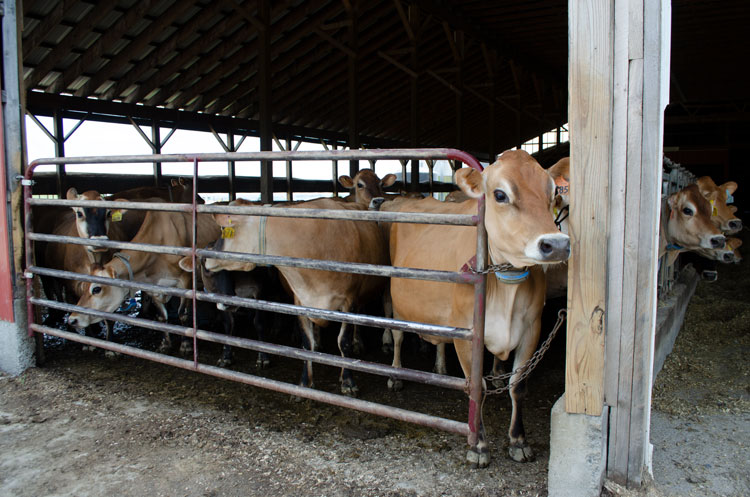
Certainly, social stress in dairy cattle has gained traction as we have learned more about stress’s impact on cattle performance. This has especially become a concern in the transition period where researchers have focused many of their efforts because of the immense physical, social, and biological upheaval of that time period.
The four social stressors most commonly correlated with the transition period were detailed by Katy Proudfoot of the University of Prince Edward Island during the Penn State Dairy Cattle Nutrition Workshop.
- Overcrowding: According to Proudfoot, overcrowding is probably the leading social concern during the transition period because high stocking densities mean cows have to compete for resources critical to their health — feed and lying space.
- Social instability: This term identifies the effect of regrouping and pen moves on cattle during the transition. Research has indicated that regrouping of prefresh cows results in 9 percent lower feed intakes and rumination times. Proudfoot suggested moving cows into the transition pen in groups or in an all-in-all-out strategy. Additionally, consider regrouping only once per week rather than once per day.
- Social defeat and low status: Proudfoot shared that this is the least understood of the social factors. This impact is tied to nondominant cows and their risk of displacement.
- Social isolation: This is generally considered stressful for cows, but when calving is occurring, they tend to seek some separation from the herd. Certainly, tied into this is separation of the cow and the calf. Proudfoot shared that this would be a growing area of concern for consumers.
She offered these tips for mitigating stress. Reduce social competition by increasing the space per animal. Also, limit pen moves or use an all-in-all-out approach. Additionally, separate stressors and identify individuals that may be the most at risk.
“Mitigating chronic stress (with or without its impact on disease) is important for animal welfare,” Proudfoot advised. “It changes the way cows perform natural behaviors.








